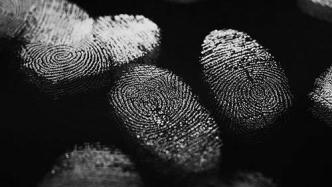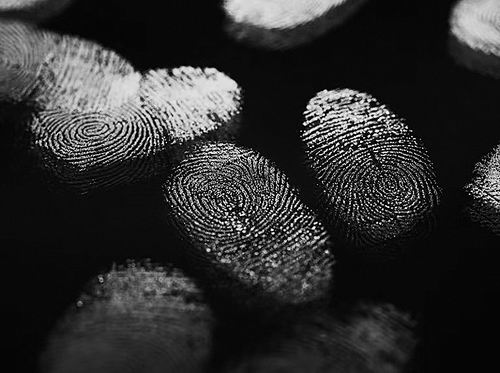

Fingerprints are formed by the diffusion and collision of ridges. Credit: Tek Image/Science Photo Library
The unique arches, loops and spirals of fingerprints are formed during fetal development when tiny ridge-like ripples on the fingertips spread and collide with each other. This is a similar process to how zebras create their stripes or cheetahs create their spots.
A study published Feb. 9 in Cell shows that an interaction between two proteins—one that stimulates and the other inhibits ridge formation—produces periodic ridges, which appear in the 3 different areas on the fingertips. The collisions between the ridges and the precise location of these 3 regions create the fingerprint's unique pattern. "The key to forming the different bows, loops and helices is not just the molecular composition, but how they are distributed on the hand," says study co-author Denis Headon, a developmental biologist at the University of Edinburgh, UK.
Fingerprints add friction and sensitivity to fingertips and have long been used to identify individuals and diagnose some developmental conditions. Last year, Headon et al. studied genes that affect fingerprint shape, many of which are involved in limb development. They appear to provide the basis for fingerprint formation, but many of these genes are not active during fingerprint formation, suggesting that they are not directly involved in the formation of the ridges in the fingerprint.
To learn more about fingerprint patterns, researchers such as Headon tracked how fingerprints are formed during fetal development. Anatomical studies and analysis of gene activity revealed that the cells that form ridges follow a developmental pathway that initially mimics hair follicles. However, unlike the pattern of gene activity in hair follicles, ridge cells cannot recruit cells deeper under the skin's surface.
These analyzes support the existence of a "Turing reaction-diffusion system". This system is created when a molecule that activates a developmental process stimulates both itself and an inhibitory molecule. It's a self-organizing system that creates periodic patterns, says developmental biologist Marian Ros of the Institute of Biomedicine and Biotechnology in Cantabria, Spain.
In 1952, mathematician Alan Turing proposed the system as a chemical explanation for developmental processes, such as the arrangement of a plant's leaves or the tentacles of the small aquatic organism Hydra. Since then, the Turing reaction-diffusion mechanism has been thought to help establish a variety of familiar biological sights, including the brightly colored scales of some tropical fish and the feather patterns of birds.
To find the molecules that guide the formation of fingerprint patterns, Headon et al. studied the ridges on the toes of mice, as well as human cells in three-dimensional cultures. They found that a protein called WNT, which plays an important role in hair follicle development, stimulates the formation of ridges. Another protein called BMP inhibits them, creating a Turing reaction-diffusion system.
The ridges come from 3 areas: the fingertip, the center of the fingertip, and the crease at the bottom of the fingertip (where the finger bends). Headon's team varied the timing, angle and precise location of ridge origin in these three regions and created bow, loop and spiral patterns. "These ripples collide with each other and create eddies, which contribute to the diversity of fingerprint patterns," says developmental biologist Cheng Ming Chuong of the University of Southern California.
Chuong noted that past research on skin wrinkles, such as fingerprints, tended to focus more on theoretical and modeling approaches rather than experimental data. But the latest research uses cell culture technology and other methods to advance research in this area. "This research opens up the field, and now people may be paying more attention to these hidden patterns on our skin," he said.
(Original title "Why Fingerprints Are Not Repeated")
Related paper information:
https://doi.org/10.1038/d41586-023-00357-x